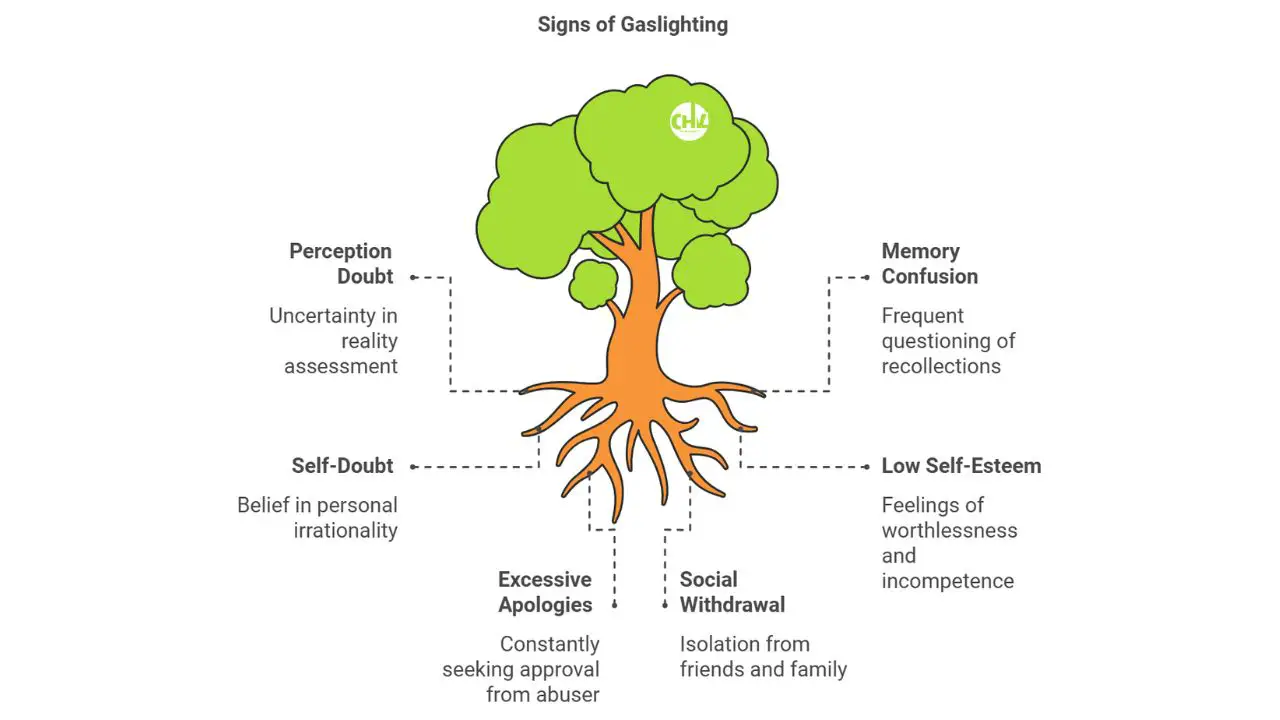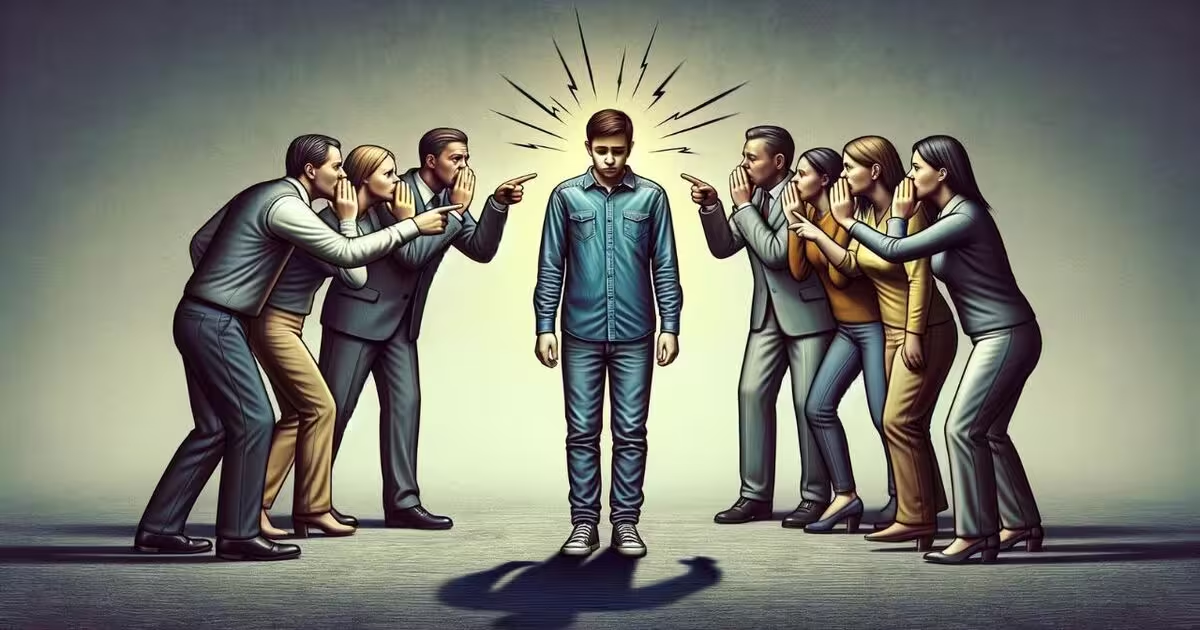What Is Gaslighting – 8 Signs That You Are Being Gaslit

Imagine constantly doubting your thoughts and memories. You start wondering if you’re losing touch with reality. This is the experience of gaslighting.
It’s a psychological tactic that makes you question your sanity. Victims of gaslighting often feel anxious and confused. They no longer trust their judgment.
The term “gaslighting” comes from Gaslight, a 1940s movie. In the film, a husband manipulates his wife into thinking she’s unstable. His goal is complete control over her.
In this article, we’ll look at gaslighting and how it works. We’ll look at common signs, examples, and how to protect yourself. Recognizing gaslighting is the first step to reclaiming your peace of mind.
Subscribe to Create Higher Vibrations!
Get Inspiration and Practical advice straight to your inbox.
What is Gaslighting?
Gaslighting is a sneaky and damaging form of emotional abuse. It makes you question your thoughts, memories, and even reality. The person doing it twists the truth so much that you start doubting yourself. This manipulation wears you down and makes you feel like you can’t trust your mind.
This tactic became more recognized in the 1970s, especially in abusive relationships. Psychologists began to dig deeper into how it works, and it’s not just about lying. Gaslighting is about control.
The gaslighter distorts your reality, making you believe their version of events. You end up relying on them, unsure of what’s real and what’s not.
It’s more common than you might think. A 2019 report from the American Psychological Association (APA) found that 1 in 5 adults in the U.S. experiences emotional abuse, which includes gaslighting.
That’s a staggering number. It shows just how widespread this behavior is and why it’s so important to spot the signs early on.
If you’ve ever felt confused or doubted your feelings after a conversation, you might have been gaslit. Recognizing it is the first step toward breaking free.
What Is Gaslighting Examples
Gaslighting behaviors are subtle, but they work by gradually breaking down a person’s confidence and sense of reality. Below are some examples of how it happens:
Why Gasighting Is Harmful
Gaslighting hurts you at your core. It steals your trust in what you see, hear, and feel. It chips away at your confidence. It traps you in constant doubt.
These harms don’t stand alone. Doubt fuels worry. Worry drains your energy.
Low self-esteem sparks guilt. Guilt anchors you in shame. You carry someone else’s story instead of your own.
Imagine remembering a moment with perfect clarity. Then, someone rewrites it right in front of you, insisting you dreamed it.
They laugh at the memory you trust. You start to wonder if you imagined your past. This confusion cuts into every choice you make.
You stop trusting your gut. You freeze on simple plans. You dread small decisions. Work feels harder. Social invitations feel risky. You live on guard instead of living freely.
What happens when you can’t trust your mind? Who do you turn to when reality feels like shifting ground? By stealing your truth, gaslighting steals your power. It robs you of clarity, confidence, and calm. It leaves you questioning your worth and doubting your existence.
Every part of your inner world feels unsafe. Gaslighting rewires how you think, feel, and believe. It buries your voice under layers of denial. The harm runs deep. The harm lasts long. The harm can touch every moment of your life.
Is Gaslighting Harmful
The effects of gaslighting can be profound. A 2020 National Domestic Violence Hotline study found that about 1 in 4 women experience severe physical violence. This violence is often inflicted by an intimate partner.
About 1 in 7 men experience the same. This violence is often paired with emotional abuse like gaslighting.
The mental toll is immense. A 2018 study from the Journal of Clinical Psychology revealed that people who experience gaslighting are at higher risk. They have a greater chance of developing anxiety disorders.
These individuals are also prone to depression and PTSD. These conditions can make it even harder for victims to recognize the manipulation, trapping them further into toxic relationships.

Gaslighting In The Workplace
Gaslighting doesn’t just happen in romantic or family relationships. It can also occur in professional environments.
A 2022 survey by the Society for Human Resource Management (SHRM) found that 61% of employees reported experiencing workplace harassment. This survey revealed that workplace harassment is widespread.
The survey from SHRM shows that workplace harassment is a significant issue. This harassment can include gaslighting behaviors like trivializing concerns or shifting blame.
Workplace gaslighting can leave employees feeling confused, isolated, and constantly doubting their work performance.
This form of manipulation is often used by individuals in positions of power. It makes it difficult for the victim to address or escape the situation.
8 Signs of Gaslighting
1.) They Lie To You
Habitual and pathological lying is a common tactic in gaslighting. The gaslighter sticks to their false narrative, refusing to change their story even when confronted with proof.
They often use phrases like “You’re making things up” or “That never happened.” This leads you to question your memory. You also question the validity of your experiences.
2.) They Devalue You
To devalue you, gaslighters spread false information about you to others. They may pretend to be concerned about your well-being while subtly suggesting that you’re unstable.
By convincing you that others have negative opinions about you, they isolate you and increase your dependency on them.
3.) They Use Distractions
Gaslighters adeptly avoid direct answers by changing the topic, a method to evade accountability. This tactic makes you question the need to pursue your concerns. It steers conversations away from their actions. It makes you doubt the importance of your worries or suspicions.
4.) Your Thoughts and Feelings are Irrelevant
Trivializing your emotions is a common gaslighting behavior. By undermining your confidence in your feelings, they create a power imbalance in the relationship.
The gaslighter’s dismissal of your thoughts and emotions makes you question your self-worth and judgment.
5.) Blame-shifting
Blame shifting is a technique where the gaslighter deflects responsibility onto you. They often accuse you of overreacting or being the problem, thereby evading their accountability.
This behavior leaves you feeling confused, unsure, and often guilty for the supposed issues in the relationship.
6.) They Deny, Deny, Deny
A classic sign of gaslighting is persistent denial. Gaslighters refuse to admit fault, especially in abusive situations, compelling victims to doubt their own experiences and perceptions.
This steadfast denial is a cornerstone of their manipulation, making it challenging for victims to trust their reality.
7.) They Use Kindness as a Weapon Through Words
Gaslighters often use kindness as a weapon, phrasing words in a way that makes you question yourself. Underneath seemingly kind and caring words, lie their true intentions.
They aim to manipulate and control. This can be particularly disorienting as it cloaks their abusive behavior in a veil of false concern.
8.) They Rewrite The Past
Gaslighters commonly retell events in ways that are favorable to themselves, altering the narrative to suit their agenda. This causes you to question your memory and perception of reality.
It often leads to confusion. You may feel a sense of disconnection from your own experiences.

What Is Gaslighting In Psychology
When someone distorts your reality, it’s like water slowly eroding a stone – over time, it leaves a mark. Gaslighting does the same to your mental health, constantly planting doubt that wears down your sense of self.
It hits your self-esteem hard. You begin to question your decisions, memories, and feelings, losing your sense of direction. This leads to isolation, as you pull away from loved ones, convinced they won’t understand.
The emotional toll is heavy. Gaslighting often leaves you anxious, depressed, and exhausted from trying to piece together what’s real. Some even develop PTSD due to the intense psychological strain.
In abusive relationships, the gaslighter amplifies this turmoil, using your emotions against you to make you feel even more trapped.
Discover Your Inner Self. Join Our Self-Mastery Program.
Self-Mastery Coaching gives you the space, tools, and guidance to grow, reflect and discover your values and inner strength.

Gaslighting as a Form of Emotional Abuse
Gaslighting is more than a bad habit; it’s a form of abuse. It’s a tactic to control and harm someone emotionally and mentally. The scary part? It can happen to anyone, no matter how strong or independent they are. It creeps up on you until you’re trapped in its web.
In relationships, gaslighting quickly turns toxic. One partner manipulates the other, creating an imbalance of power. They may promise to change, only to break their word, leaving the other feeling powerless.
This can also occur in families or friendships, where manipulation causes you to doubt your own experiences. Gaslighting uses tactics like denying past abuse or exploiting stereotypes to undermine credibility. For example, dismissing a woman’s feelings as “hormonal” or “overreacting.”
Being gaslit isn’t just about lies or denials, it’s a deliberate form of abuse. Recognizing it is the first step in reclaiming your power and starting the healing process.
What Gaslighting Looks Like
The hardest part of gaslighting is recognizing that it’s happening. Victims often feel disoriented and unsure if they’re overreacting. Here are some common signs of gaslighting:
If you notice these signs in your own life, it’s important to take action.
How to Respond to Gaslighting
If you’re experiencing gaslighting, gathering evidence can help you confirm your reality. Keep a secret diary, voice memos, or photographs to track events. Confide with a friend or counselor to get an outside perspective.
It’s important to be discreet when collecting evidence. You don’t want the abuser to find out, as this could escalate the situation.
Support and Resources for Victims
There are resources available for those affected by gaslighting and other forms of abuse. According to the National Coalition Against Domestic Violence (NCADV), there are over 10,000 domestic violence shelters and programs across the U.S. offering critical support.
Talking to a professional, such as a therapist who specializes in trauma, can also be incredibly helpful. They can help you rebuild your confidence and make sense of what’s happening.
Final Takeaway
As we wrap up this look into gaslighting, it’s clear. Understanding this form of emotional abuse is just the first step. Recognizing it is only the beginning. The real goal is to help you reclaim your trust in yourself and regain your power.
Gaslighting twists your perceptions and chips away at your self-esteem, leaving lasting scars. But healing is possible, and with the right support, you can rebuild your confidence and move forward.
If you’re ready to take back control and start your healing journey, consider working with Coach Vishnu Ra. He offers the guidance and tools you need to overcome emotional abuse and find your strength again.
Namaste 🙂




